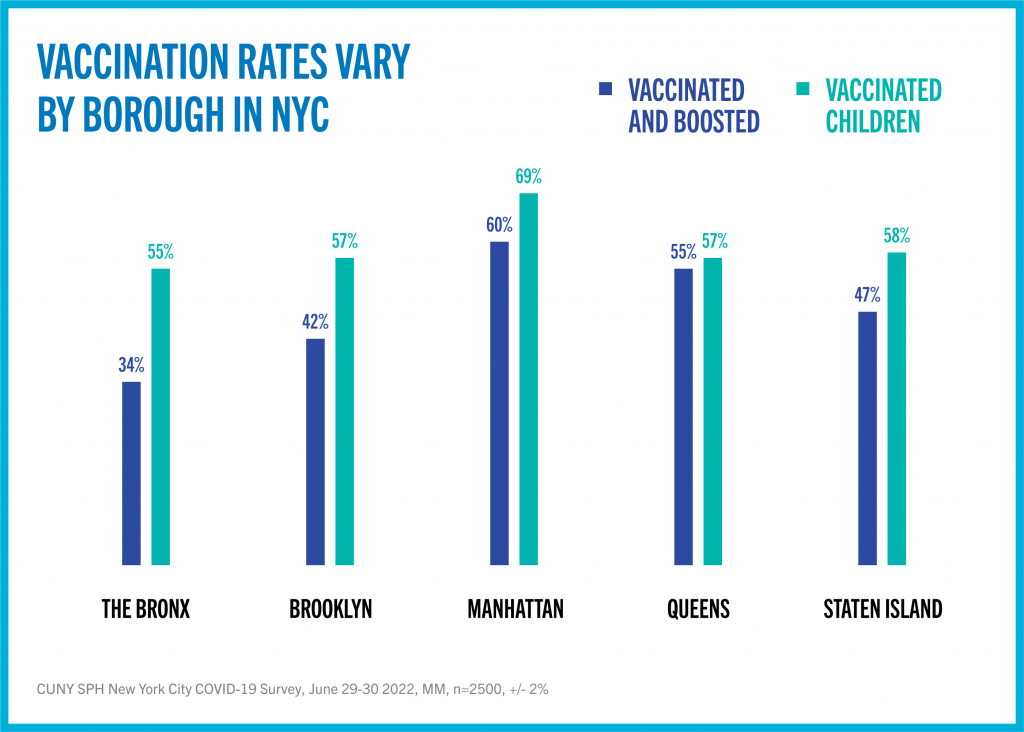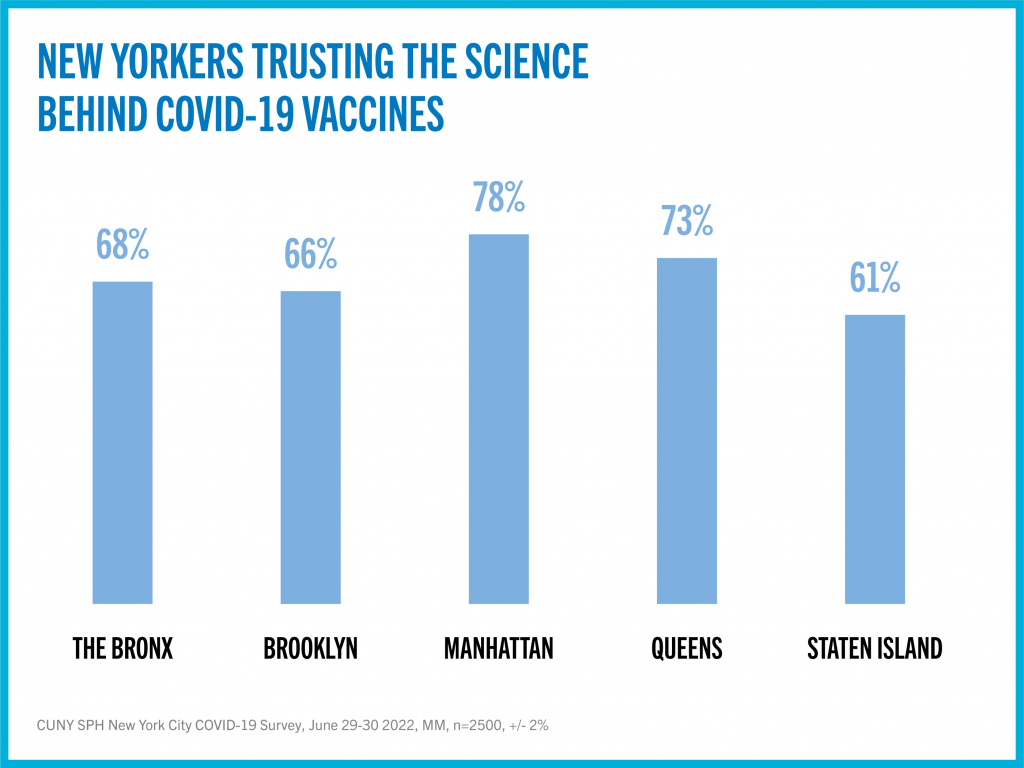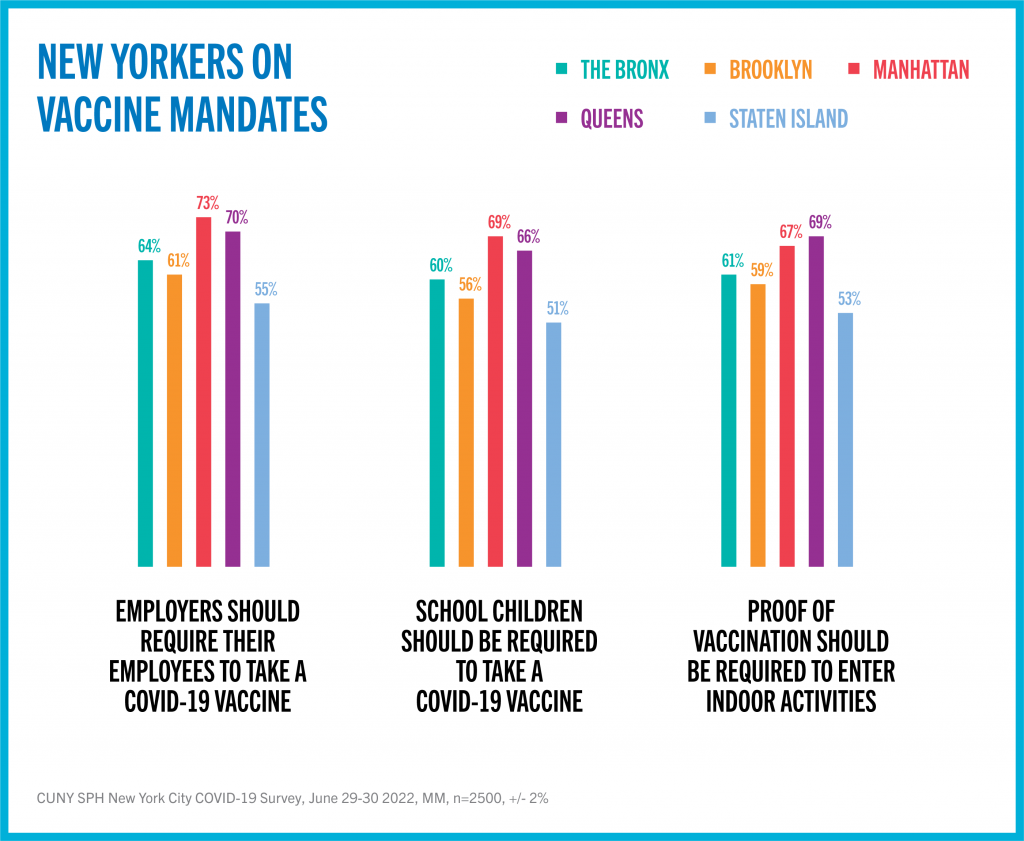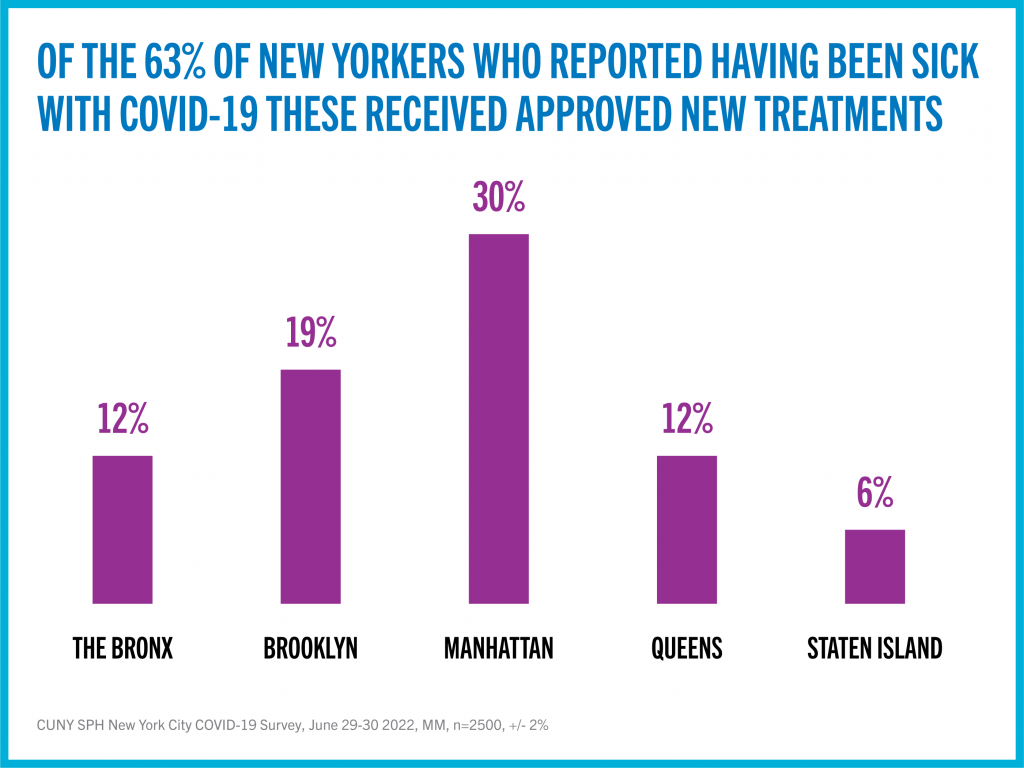CUNY SPH COVID-19 Survey – AUGUST 2022
COVID behaviors and attitudes vary among NYC boroughs, CUNY SPH survey finds
2,500 respondents show range of opinions on COVID-19 risk, vaccines, treatments and mandates
As the nation follows new CDC recommendations to relax COVID-19 restrictions, a new survey of 2,500 New Yorkers conducted by the CUNY Graduate School of Public Health and Health Policy (CUNY SPH) revealed clear differences among the boroughs in vaccine and booster uptake, childhood vaccination, treatment when sick and general trust in the safety and effectiveness of the vaccine. The range of full vaccine and booster coverage across the five boroughs was 60% in Manhattan to 34% in the Bronx, with Queens at 55%, Staten Island at 47%, and Brooklyn at 42%.

“These survey findings help us to examine the blind spots within our communities regarding the continued risks of COVID-19 exposure and need for vigilance in protection,” says Dr. Ayman El-Mohandes, Dean of CUNY SPH. “With recent guidelines of the CDC loosening requirements for COVID-19 quarantining and isolation, more responsibility has been placed on the shoulders of individuals to make better choices for themselves and their families. We as public health advocates must double down on education about testing, prevention and treatment for those at high risk.”
The survey showed adherence to protective measures among most New Yorkers, even amidst general COVID-19 fatigue. The majority of respondents (86%) have received at least one dose of the vaccine, and 60% have had their children vaccinated. Respondents also supported public health initiatives such as vaccine mandates among employers (66%), schools (62%), indoor activities (63%) and international travel (71%). Three-quarters (74%) of New Yorkers stated they would prefer to rely on the vaccine alone or combine it with treatment if they become ill.
Yet when asking about their beliefs, the survey showed pockets of resistance. Only 66% of Staten Islanders agreed that the risks of COVID-19 are greater than the risks of the vaccine. This compared to 76% of respondents in Manhattan, followed by Queens at 75%, Brooklyn at 72% and the Bronx at 70%.
When asked if they trust the science behind COVID-19 vaccines, respondents from Manhattan led the affirmation at 78%, in stark contrast with those from Staten Island at 61%. Falling in between were Queens at 73%, the Bronx at 68% and Brooklyn at 66%.

Furthermore, there remains a gap over the safety of the vaccine: 82% of Manhattanites believe in it, compared with only 72% in Staten Island and 71% in Brooklyn.
When it comes to taking action through vaccine uptake or future treatment plans, the survey also showed a significant difference among boroughs:
- 69% of parents in Manhattan have had a child vaccinated, compared to 55% in the Bronx.
- Queens respondents were most likely to consider both vaccination and treatment (80%) as preferred interventions, while Staten Island residents were least likely to accept both (66%).
- Two-thirds (66%) of Manhattanites said they would take a booster every six months if recommended by health authorities as compared to Staten Island at 41%.
- Regarding vaccine mandates across the board, Manhattanites were the most likely to support restrictions and Staten Islanders the least.

Regarding attention to new messages around COVID-19, almost 30% across all boroughs are paying less attention now compared with one year ago, with the exception of the Bronx where 20% are paying less attention.
“These data suggest it will be vital to ramp up communication efforts with targeted and tailored messages to address the needs of each community and advance health equity,” says Dr. Scott Ratzan, Distinguished Lecturer at CUNY SPH.
Crucially, the poll may suggest uneven availability and access to treatment across the boroughs. Responses from those who reported having been sick with COVID-19 (63%) revealed a wide disparity between those who received one of the approved new treatments and those that did not. These ranged from 30% in Manhattan to only 6% in Staten Island. Others were Brooklyn at 19%, and Queens and the Bronx at 12%. Among those who reported use of approved available treatments, 5% said they had more than one treatment, 4.5% monoclonal antibody, 4.5% Molnupiravir, 4% Paxlovid and 1.4% steroids.

“It is important to disseminate more information about eligibility for treatment to all health care workers across the city and to ensure accessibility regardless of geographical location,” Dr. El-Mohandes says.
New Yorkers entering their third year of COVID have bleak views of the near-term economy and a strong conviction that vaccines should be required for those seeking to participate in their city’s indoor activities (69%), to work in its service industries (66%) or schools (69%), and even to travel on airplanes (68%).
